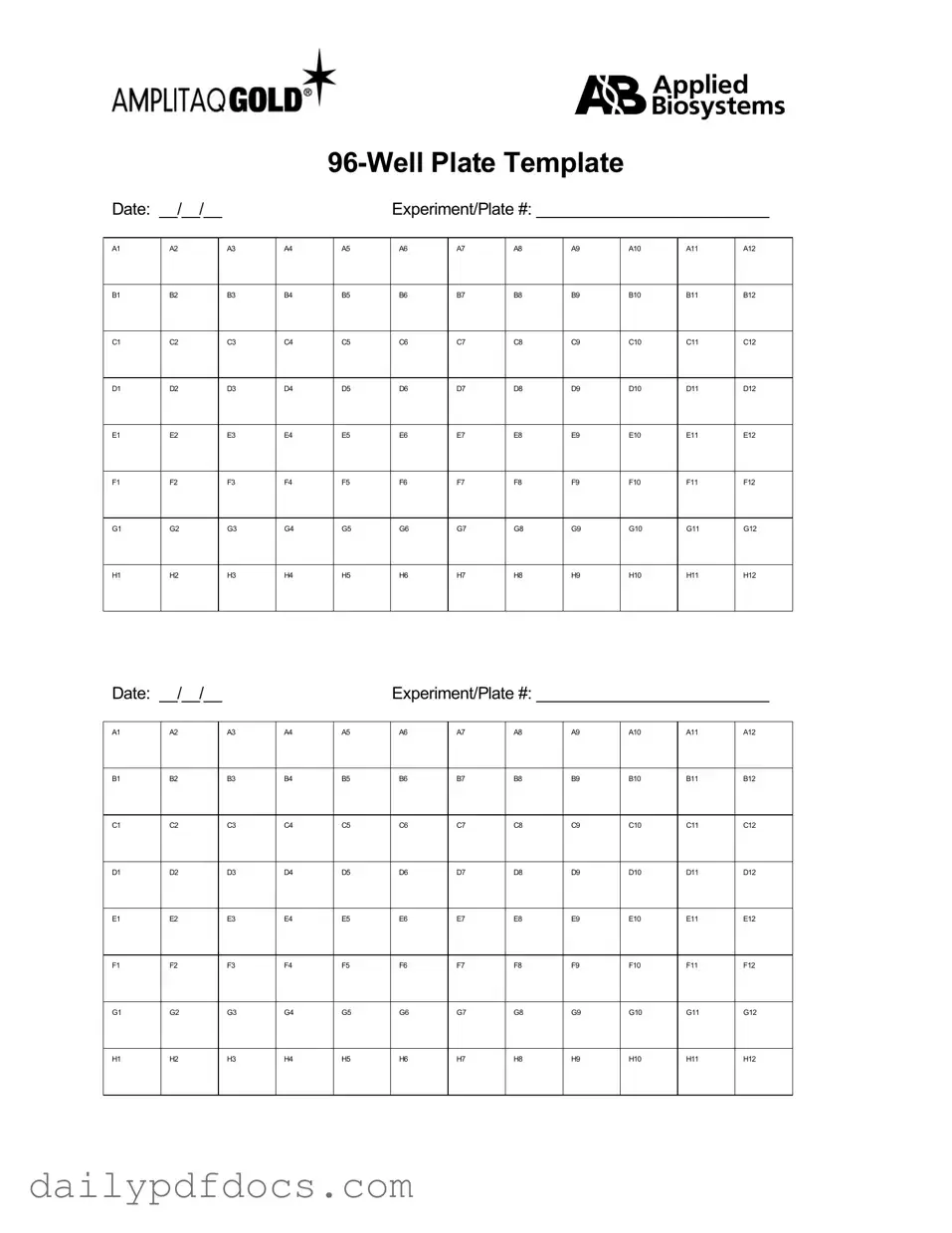What is the 96 Well form used for?
The 96 Well form is primarily used in laboratory settings for various applications, including biological assays, chemical reactions, and sample storage. It allows researchers to conduct multiple experiments simultaneously, facilitating efficient use of time and resources. Each well can hold a different sample or reagent, making it versatile for a range of scientific studies.
How do I fill out the 96 Well form?
Filling out the 96 Well form typically involves labeling each well according to your experimental design. You may need to indicate the type of sample, concentration, or any other relevant information. It’s essential to maintain clarity and accuracy to avoid confusion during experiments. Use a consistent format and ensure that all necessary data is included for each well.
Can I use the 96 Well form for different types of samples?
Yes, the 96 Well form is designed to accommodate various types of samples, including liquids, solids, and even cell cultures. However, it’s crucial to ensure that the materials used in each well are compatible with one another and that they won’t interfere with the results of your experiments.
Is there a specific temperature range for using the 96 Well form?
The temperature range for using the 96 Well form depends on the specific applications and the materials involved. Generally, it is advisable to store the plates at temperatures recommended by the manufacturer or based on your experimental requirements. Keeping samples at appropriate temperatures ensures the integrity and reliability of your results.
How do I properly clean and maintain the 96 Well form?
Proper cleaning and maintenance of the 96 Well form are crucial for ensuring the longevity of the equipment. After use, rinse the wells with distilled water and allow them to dry completely. For more thorough cleaning, you may use a mild detergent or a suitable cleaning solution. Avoid using abrasive materials that could scratch the surface.
What are the common mistakes to avoid when using the 96 Well form?
Some common mistakes include mislabeling wells, overfilling or underfilling them, and not following the recommended protocols for specific assays. Additionally, failing to check for contamination can lead to inaccurate results. Take your time to double-check your work and adhere to best practices to minimize errors.
Where can I find more information about the 96 Well form?
For more information about the 96 Well form, consult the manufacturer's guidelines or product manuals. Many scientific journals and online resources also provide valuable insights into best practices and innovative uses for the 96 Well format. Engaging with the scientific community through forums and discussions can also enhance your understanding and application of this tool.

